The primary difference between a dust mask, a surgical Mask, and a respirator is the level of protection they provide against airborne viruses, pathogens, and other contaminants. The dust mask offers the least amount of protection whereas respirators offer the best.
Some other mentionable difference lies in the material used, certification, and price. Let’s dive into the topic and find out what sets these three masks apart and what is your best option.
Dust mask
Dust masks offer a basic level of protection from airborne particles. They are mainly used in workshops and construction sites, where there are a lot of particles floating around in the air. They look similar to the respirators but don’t provide the same level of protection.
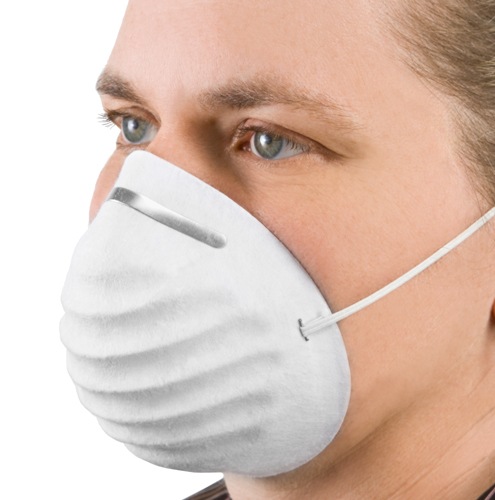
Usually, a dust mask is equipped with just one strap and has the same cup shape as a disposable respirator.
One thing is worth mentioning here, dust masks don’t have any kind of information printed on them. They aren’t certified by the National Institute for Occupational Safety & Health (NIOSH).
Surgical mask
Approved by the Food and Drug Administration (FDA), surgical masks offer a decent level of protection against airborne particles. They are mainly used to protect an individual from spreading bodily fluid in the form of cough or sneeze.
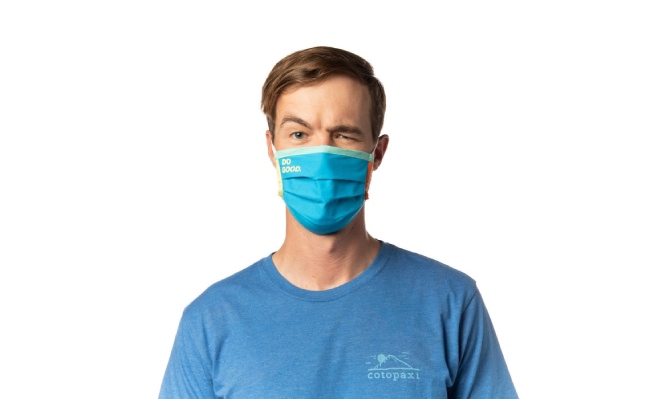
Surgical masks don’t protect the wearer, rather it helps to keep the contamination at a minimum so that fewer people get infected through the wearer. Most of them don’t come with a safety rating. However, they offer significantly better protection than not using any mask.
Respirator
Respirators are evaluated, tested, and approved by NIOSH, USA’s National Institute for Occupational Safety & Health. They look similar to dust masks but offer much better protection.
Respirators will create a tight seal over your face and block both large-and micro-droplets (minimum 95% protection) from entering your respiratory system. They are equipped with multiple layers of filters and will protect you from most air-based pathogens.
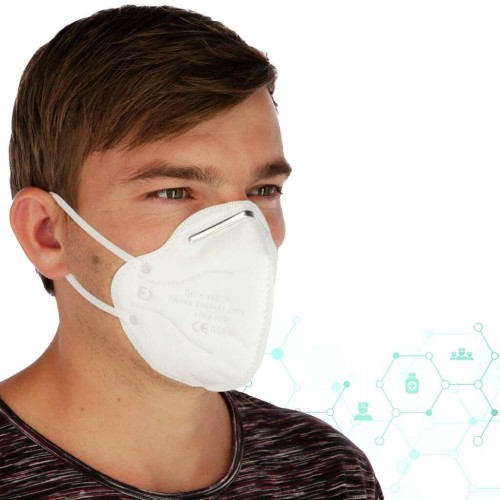
The easiest way to distinguish a disposable respirator from a dust mask is the printed information and the number of stripes. Respirators offer multiple levels of protection based on their approval levels.
What Are the Differences Between Them?
1. Material
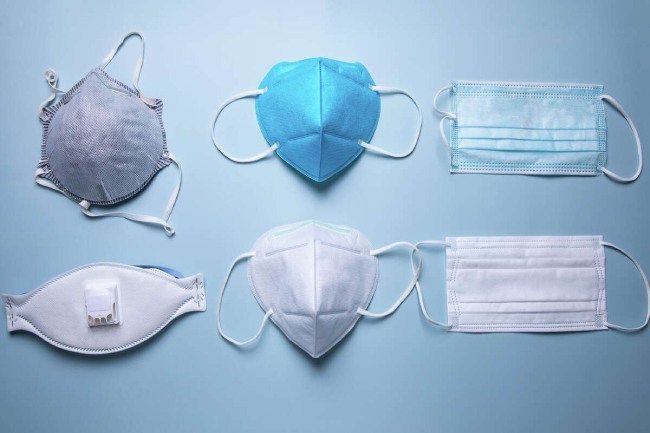
Dust mask
Generally, dust masks are made from paper or synthetic plastic fibers. They are usually single-layer masks with a dense thread count.
The tighter the thread count on your dust mask, the better protection. Dust masks help to filter large droplets, but can’t stop much smaller microdroplets.
Surgical mask
Most commonly used surgical masks (the blue ones) are made from non-woven fabric. The most widely used material is named “polypropylene”, a fabric made from a “thermoplastic” polymer.
Other materials like polystyrene, polycarbonate, polyethylene, or polyester can also be used to make surgical masks.
Respirator
Respirators can be manufactured from a wide variety of materials, depending on the intended protection level. The most commonly used material to make quality respirators include silicone, neoprene, and rubber.
Silicon-based respirators offer comfort and convenience whereas neoprene and rubber-based ones provide durability and strength.
2. Level of protection
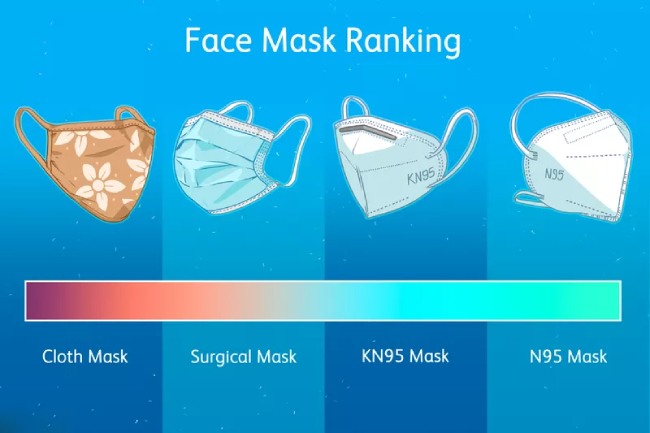
Dust mask
Dust masks offer a minimum level of protection when it comes to filtering pathogens and other microbes. They usually provide 20-30% protection, depending on the material used.
This might be true that they look and feel the same as the disposable respirators, but dust masks can only save you from dust particles and a small number of pathogens. They are practically ineffective against organic vapors.
Surgical mask
As I’ve mentioned earlier, they aren’t designed to protect you from inhaling pathogens, rather than spreading them into the environment. The polypropylene used to make surgical masks is tightly packed and has a special property.
Polypropylene can generate a minuscule electric charge that attracts and traps airborne particles and droplets. However, they fit loosely around your face, leaving some gaps; and as a result, the protection level goes down. They offer around 90% protection.
Respirator
Respirators offer the best level of protection from both large and micro droplets. They fit snugly over your face, creating a tight seal. Respirators also use an advanced filtration system (reusable ones) that can even filter organic vapors.
The fabric structure of respirators is even tighter than surgical ones. The material used can also produce an electric charge to trap smaller particles. All the respirators offer at least 95% protection from all airborne particles.
3. Seal
Dust mask
Dusk masks create a snugly-fit seal around the user’s face and prevent pathogens from passing through the loose ends. They also feature a metal clip on the upper side of the mask that you’ll need to pinch around your nose.
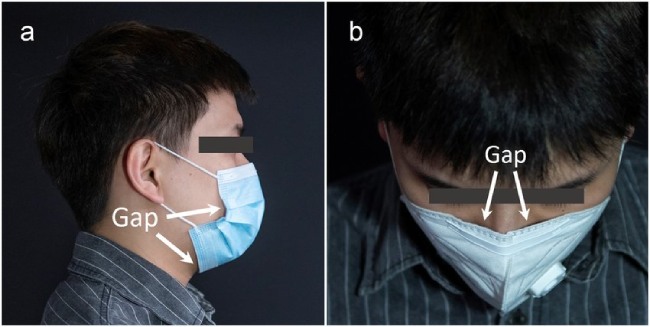
Surgical mask
The only downside is the absence of a tight seal. Even if the materials do a pretty good job at keeping viruses away, the loose ends defeat the purpose.
The small distance between your skin and the mask may seem negligible to you, but smaller pathogens (smaller than 0.1 microns) can easily enter your respiratory tract through that gap.
Respirator
Just like the dust masks, the respirators will also create a tight seal around the lower part of your face. This will significantly increase your protection against airborne particles. The key is to tighten your respirator. Many people even use Kleenex to tighten the seal.
4. Certification
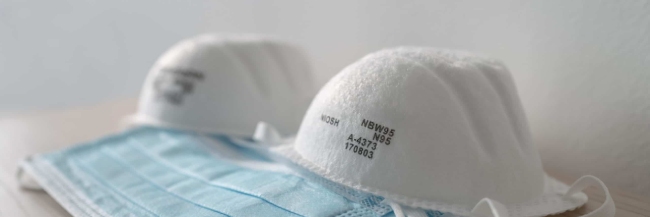
Dust mask
Dust masks, homemade masks, and most paper masks don’t come with any certification. Despite providing a decent amount of protection, they don’t have any official credentials. The protection dust masks provide isn’t enough to protect you from airborne viruses and microbes.
Surgical mask
Aside from the fact that surgical masks don’t fit perfectly over your face, they offer around 90-95% protection from you contaminating your surrounding. They are tested and cleared by the U.S. Food and Drug Administration (FDA).
Respirator
Among today’s three contestants, respirators hold the highest credentials when it comes to protection levels. These nifty devices can provide around 95-99% protection from all airborne particles. All respirators must be evaluated, tested, and approved by NIOSH.
5. Price
Dust mask
Most types of masks are sold in bulk, usually in a set of 20-50 pcs. You’ll be able to find a decent quality dust mask for around ¢ 25-90. They are neither as pricey as the respirators, nor as cheap as the mass-produced surgical masks.
Surgical mask
Surgical masks are the cheapest among our three contestants today. They are also sold in bulk and cost around ¢ 0.15-0.50. They come in various colors but blue is the most common.
Respirator
Respirators aren’t usually sold in bulk. They are the most expensive option and still cost below $2. The reusable ones are more expensive than the disposable ones. Respirators are mostly white in color.
Which One to Choose?
The answer to that question is a little tricky. If you are a non-medical person who just wants to stay protected and practices social distancing, or you have to work in a dusty environment, a dust musk will be the most effective option for you.
In case your primary goal is to stop the spreading of pathogens in a social gathering or workplace, a cheap surgical mask will do the job nicely. They are also useful in keeping health professionals from contaminating their surroundings with airborne particles and aerosols.
If you want complete protection from all kinds of pathogens, you’ll need to go for the most expensive one, the respirator. However, the situation isn’t so simple. There are a few complications involved.
In the recent pandemic, health professionals are being exposed to a high concentration of dangerous pathogens on a regular basis. They are the frontline soldiers in our war against deadly COVID variants and we need to help them as much as we can.
The Centers for Disease Control and Prevention (CDC) earlier told us not to buy masks and there were good reasons for that. We didn’t think that people could spread the virus without showing any symptoms. Recent data shows a different picture.
Additionally, CDC wanted to make sure that healthcare professionals have adequate protection first. This might be true that respirators provide amazing protection, but we can achieve close results with other elements too.
You can even use a handmade cloth mask with multiple layers and you’ll get a decent amount of protection. Using masks properly, combined with maintaining social distance and cleaning ourselves regularly will be quite enough for us to prevent airborne pathogens or aerosols.
FAQs
1. What are the different types of respirators?
Ans: According to the use there are two types of respirators: Reusable and Disposable respirators. However, according to the protection level, we can classify respirators into three groups as shown below:
N (Ex: N-95): Provides no resistance from oil-based contamination
R (Ex: R-95): Provides decent resistance to oil-based contamination
P (Ex: P-95): Oil-based contamination-proof
2. Is maintaining a 6-feet distance enough?
Ans: No. The further you can maintain the social distance, the better. The Omicron and other variants of COVID-19 are airborne, and you can spread the virus up to 25-28 feet when you sneeze or cough without wearing a mask or respirator. Maintaining social distance as much as possible is the key to staying safe.
3. Are two masks better than one?
Ans: Yes. The efficiency of a mask or a respirator depends greatly on the number of protective layers used. Respirators use multiple layers of protective filters whereas some surgical and most dust masks are single-layer. That’s why two masks will always be better than one.


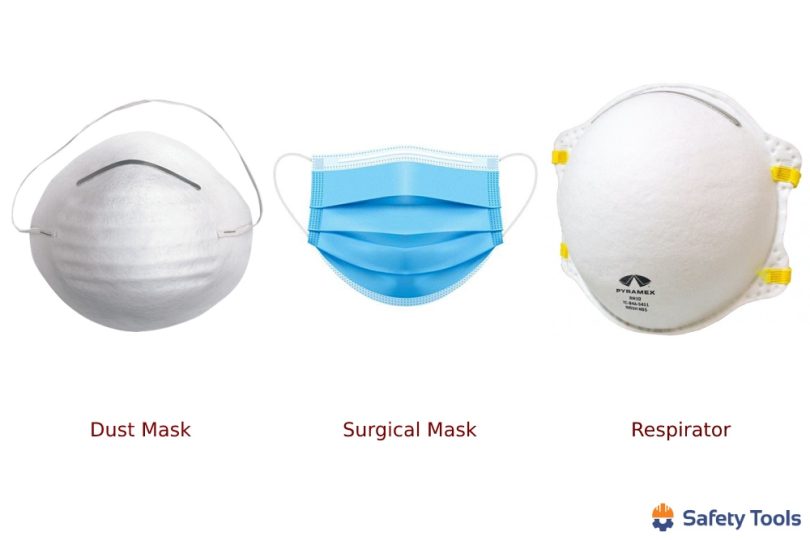

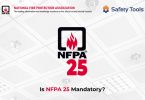
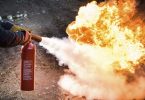
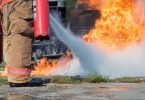

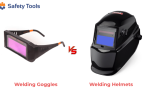
Leave a Comment